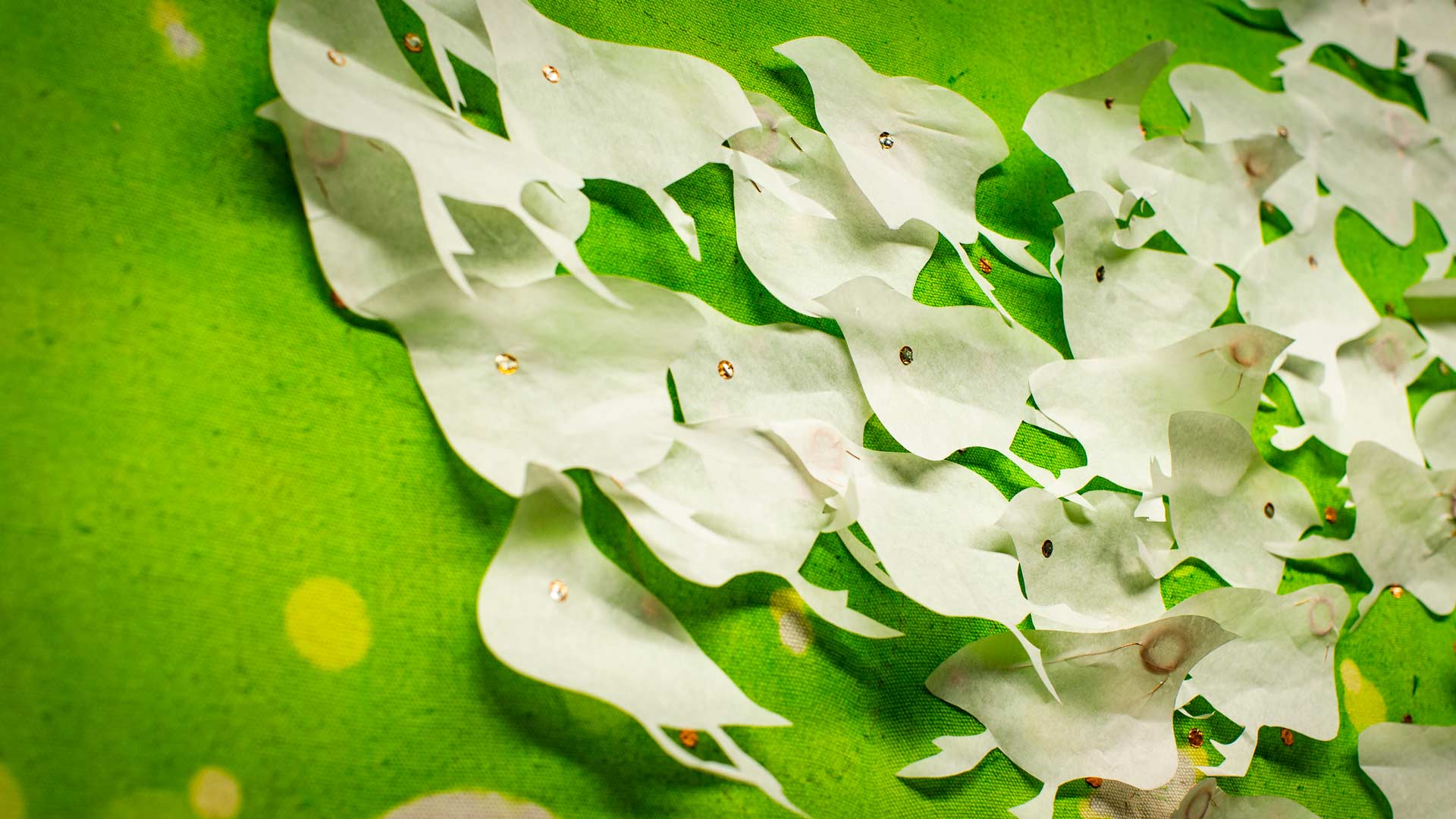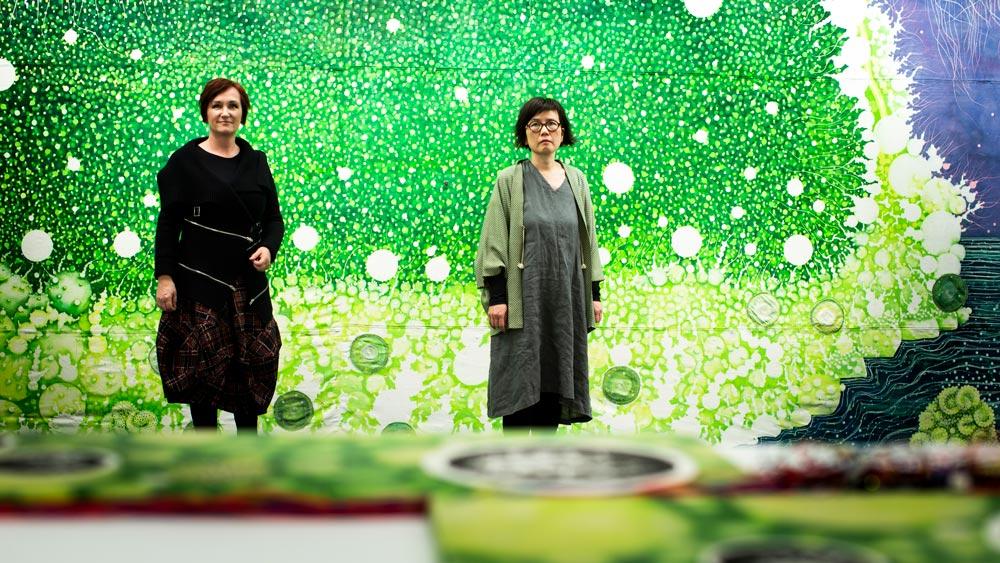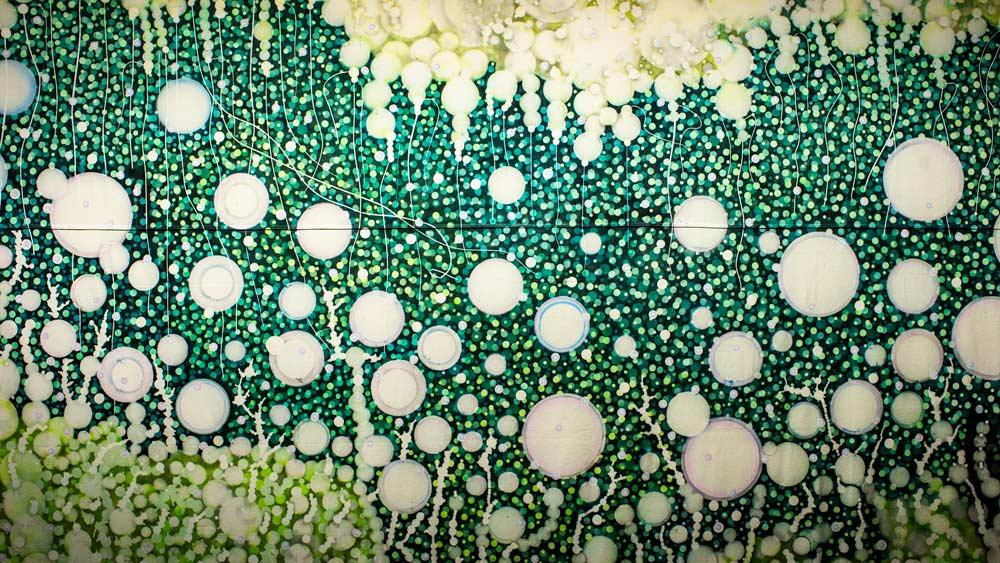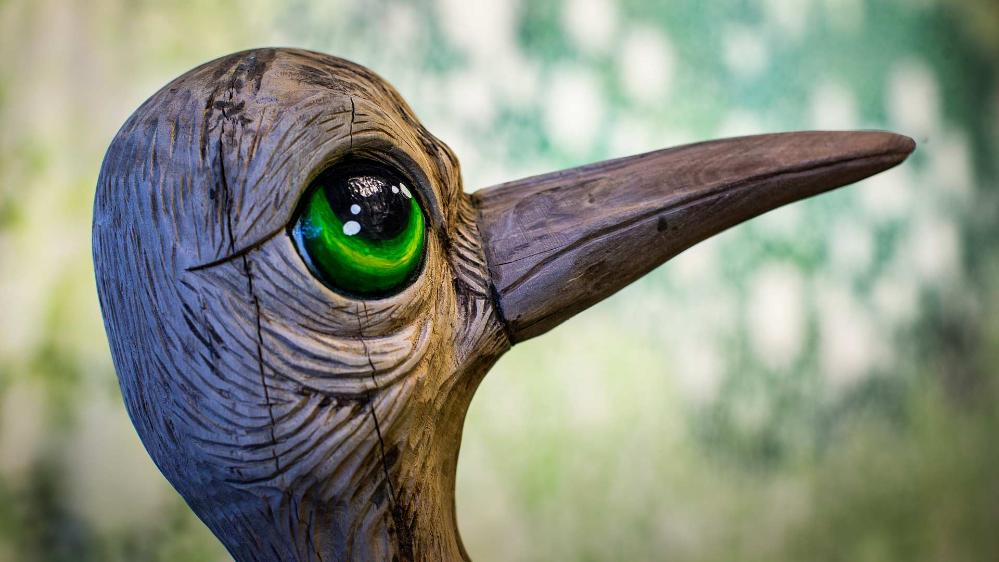
A captivating, immersive exhibition is shining a light on the connection between art and science, and providing a unique insight into the critical issues facing our planet.
Spinning World launched on Thursday 8 August at the University of Wollongong (UOW) Library's Panizzi Room, where it will be on display until 20 October.
Created by UOW researchers Dr Jo Law and Dr Agnieszka Golda, Spinning World was first exhibited earlier this year at Sydney's Powerhouse Musuem, part of the Museum of Applied Arts and Sciences, where more than 26,000 people experienced the enchanting and immersive installation.
Inspired by historical Japanese textiles and informed by the researchers' joint fellowship at the museum, the exhibition explores the relationship between art, emerging technologies, and ecology. It is a multi-sensory experience, incorporating data on climate change, multimedia content, museum objects, new materials, and original artworks.

Dr Jo Law said Spinning World is a result of collaboration between art and science, and presents a unique perspective on the science of climate change.
"Spinning World is the creative output of a Global Challenges project, which focused on how we can incorporate energy-efficient elements in our art galleries and museums. As researchers from diverse backgrounds, we were also interested in how textiles could be used to communicate the stories of our changing climate to inspire meaningful actions," said Dr Law, a Senior Lecturer in the School of Arts, English and the Media.
"The exhibition had a fantastic reception at the Powerhouse Museum and we are thrilled to be able to bring it back to UOW to share with our local and research communities."

The installation makes use of traditional Japanese metallic-thread embroidery techniques to incorporate conductive graphene developed at the Intelligent Polymer Research Institute, and embed micro-electronic circuitry into the fabric. These elements enable programmable sound, lights and movement that respond to visitors' presence via sensors in the space.
The Global Challenges research team, for the project Materials Science, Slow Textiles and Ecological Futures, also comprised UOW researchers Associate Professor Helen McGregor, based in the School of Earth, Atmospheric and Life Sciences, and Dr Sepidar Sayyar, a materials and fabrication scientist at the Intelligent Polymer Research Institute.
"Spinning World demonstrates the value of interdisciplinary collaboration. The exhibition speaks to a wide range of audiences, and conveys climate science and smart materials research through multi-sensory experiences," Dr Law said.
The exhibition will be launched by Professor Geoff Spinks, Challenge Leader of Making Future Industries for Global Challenges.
"There's so many interesting aspects to this exhibit with its use of ancient textile artistry, fabulous new materials, and interactive electronics. All these elements come together beautifully and encourage us to think about our increasingly fragile environment," Professor Spinks said.
UOW's Global Challenges Program brings together the diverse expertise of the University's world-class researchers to address problems beyond the scope of a single discipline, in collaboration with industry, government, and the wider community.







